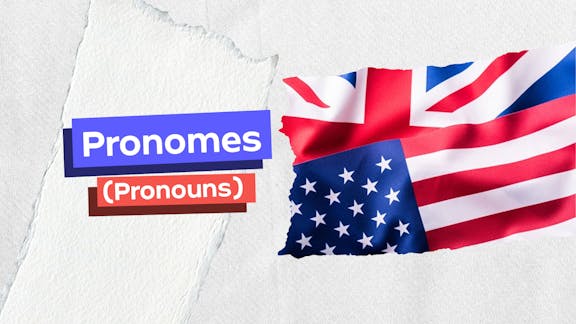The text mentions situations in which
sometimes companies have tried to fund projects in
defense of tropical forests, but were prey to
circumstances related to
T E X T
Britain, Norway and the United States join
forces with businesses to protect
tropical forests.
Britain, Norway and the United States
said Thursday they would join forces with some
of the world’s biggest companies in an effort to
rally more than $1 billion for countries that can
show they are lowering emissions by protecting
tropical forests. The goal is to make intact
forests more economically valuable than they
would be if the land were cleared for timber and
agriculture.
The initiative comes as the world loses
acre after acre of forests to feed global demand
for soy, palm oil, timber and cattle. Those
forests, from Brazil to Indonesia, are essential
to limiting the linked crises of climate change
and a global biodiversity collapse. They are also
home to Indigenous and other forest
communities. Amazon, Nestlé, Unilever,
GlaxoSmithKline and Salesforce are among the
companies promising money for the new
initiative, known as the LEAF Coalition.
Last year, despite the global downturn
triggered by the pandemic, tropical
deforestation was up 12 percent from 2019,
collectively wiping out an area about the size of
Switzerland. That destruction released about
twice as much carbon dioxide into the
atmosphere as cars in the United States emit
annually.
“The LEAF Coalition is a
groundbreaking example of the scale and type
of collaboration that is needed to fight the
climate crisis and achieve net-zero emissions
globally by 2050,” John Kerry, President Biden’s
senior climate envoy, said in a statement.
“Bringing together government and privatesector resources is a necessary step in
supporting the large-scale efforts that must be
mobilized to halt deforestation and begin to
restore tropical and subtropical forests.”
An existing global effort called REDD+
has struggled to attract sufficient investment
and gotten mired in bureaucratic slowdowns.
This initiative builds on it, bringing private
capital to the table at the country or state level.
Until now, companies have invested in forests
more informally, sometimes supporting
questionable projects that prompted accusations
of corruption and “greenwashing,” when a
company or brand portrays itself as an
environmental steward but its true actions don’t
support the claim.
The new initiative will use satellite
imagery to verify results across wide areas to
guard against those problems. Monitoring entire
jurisdictions would, in theory, prevent
governments from saving forestland in one
place only to let it be cut down elsewhere.
Under the plan, countries, states or
provinces with tropical forests would commit to
reducing deforestation and degradation. Each
year or two, they would submit their results,
calculating the number of tons of carbon dioxide
reduced by their efforts. An independent
monitor would verify their claims using satellite
images and other measures. Companies and
governments would contribute to a pool of
money that would pay the national or regional
government at least $10 per ton of reduced
carbon dioxide.
Companies will not be allowed to
participate unless they have a scientifically
sound plan to reach net zero emissions,
according to Nigel Purvis, the chief executive of
Climate Advisers, a group affiliated with the
initiative. “Their number one obligation to the
world from a climate standpoint is to reduce
their own emissions across their supply chains,
across their products, everything,” Mr. Purvis
said. He also emphasized that the coalition’s
plans would respect the rights of Indigenous and
forest communities.
From: www.nytimes.com/April 22, 2021
T E X T
Britain, Norway and the United States join forces with businesses to protect tropical forests.
Britain, Norway and the United States said Thursday they would join forces with some of the world’s biggest companies in an effort to rally more than $1 billion for countries that can show they are lowering emissions by protecting tropical forests. The goal is to make intact forests more economically valuable than they would be if the land were cleared for timber and agriculture.
The initiative comes as the world loses acre after acre of forests to feed global demand for soy, palm oil, timber and cattle. Those forests, from Brazil to Indonesia, are essential to limiting the linked crises of climate change and a global biodiversity collapse. They are also home to Indigenous and other forest communities. Amazon, Nestlé, Unilever, GlaxoSmithKline and Salesforce are among the companies promising money for the new initiative, known as the LEAF Coalition.
Last year, despite the global downturn triggered by the pandemic, tropical deforestation was up 12 percent from 2019, collectively wiping out an area about the size of Switzerland. That destruction released about twice as much carbon dioxide into the atmosphere as cars in the United States emit annually.
“The LEAF Coalition is a groundbreaking example of the scale and type of collaboration that is needed to fight the climate crisis and achieve net-zero emissions globally by 2050,” John Kerry, President Biden’s senior climate envoy, said in a statement. “Bringing together government and privatesector resources is a necessary step in supporting the large-scale efforts that must be mobilized to halt deforestation and begin to restore tropical and subtropical forests.”
An existing global effort called REDD+ has struggled to attract sufficient investment and gotten mired in bureaucratic slowdowns. This initiative builds on it, bringing private capital to the table at the country or state level. Until now, companies have invested in forests more informally, sometimes supporting questionable projects that prompted accusations of corruption and “greenwashing,” when a company or brand portrays itself as an environmental steward but its true actions don’t support the claim.
The new initiative will use satellite imagery to verify results across wide areas to guard against those problems. Monitoring entire jurisdictions would, in theory, prevent governments from saving forestland in one place only to let it be cut down elsewhere.
Under the plan, countries, states or provinces with tropical forests would commit to reducing deforestation and degradation. Each year or two, they would submit their results, calculating the number of tons of carbon dioxide reduced by their efforts. An independent monitor would verify their claims using satellite images and other measures. Companies and governments would contribute to a pool of money that would pay the national or regional government at least $10 per ton of reduced carbon dioxide.
Companies will not be allowed to participate unless they have a scientifically sound plan to reach net zero emissions, according to Nigel Purvis, the chief executive of Climate Advisers, a group affiliated with the initiative. “Their number one obligation to the world from a climate standpoint is to reduce their own emissions across their supply chains, across their products, everything,” Mr. Purvis said. He also emphasized that the coalition’s plans would respect the rights of Indigenous and forest communities.
From: www.nytimes.com/April 22, 2021
Gabarito comentado
Vamos analisar o enunciado:
The text mentions situations in which sometimes companies have tried to fund projects in defense of tropical forests, but were prey to circumstances related to...
Tradução - O texto menciona situações em que, por vezes, as empresas tentaram financiar projetos em defesa das florestas tropicais, mas foram vítimas de circunstâncias relacionadas com...
Dentre os termos apresentados nas alternativas, o único que consta do texto é "greenwashing" e se encontra no parágrafo 5. Vejamos o trecho em questão para entender o seu significado:
Until now, companies have invested in forests more informally, sometimes supporting questionable projects that prompted accusations of corruption and “greenwashing," when a company or brand portrays itself as an environmental steward but its true actions don't support the claim.
Tradução - Até agora, as empresas têm investido em florestas de forma mais informal, às vezes apoiando projetos questionáveis que geraram acusações de corrupção e "lavagem verde", quando uma empresa ou marca se apresenta como um administrador ambiental, mas suas verdadeiras ações não apoiam a afirmação.
Podemos perceber que esse termo "greenwashing" está entre aspas pois é uma palavra inexistente na língua, mas que foi usado para se referir à "lavagem de dinheiro verde", pois as empresas se apresentam como administradores ambientais, provavelmente para receber incentivos fiscais ou financeiros, mas na verdade enfrentam acusações de corrupção pois suas verdadeiras ações são outras.
Apenas para seu conhecimento, hoje em dia os países de língua inglesa usam o termo "green" para se referir a tudo que diz respeito à proteção do meio ambiente e sustentabilidade.
As alternativas A e B, "green housing" e "green building", literalmente habitação verde e construção verde, se referem a um tipo de casa projetada para ser ambientalmente sustentável. As casas verdes se concentram no uso eficiente de energia, água e materiais de construção. Uma casa verde pode usar materiais de construção de origem sustentável, ambientalmente corretos e / ou reciclados.
A alternativa C, "green living", literalmente "vida verde" se refere a um estilo de vida que tenha por prerrogativa a proteção do meio ambiente e sustentabilidade.
Gabarito do Professor: Letra C.






